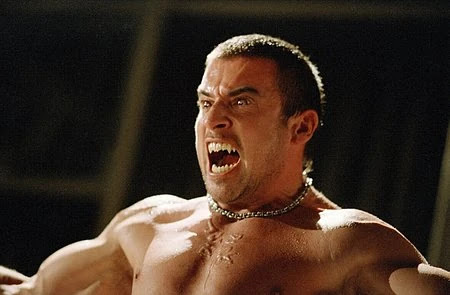My most definitive statement on the rise of identity politics in the 21st century has been the three part TRUMP VS SHAME CULTURE, starting here. But I started thinking about the role of humor in culture, thanks to a Youtube podcast in which Michael Rowe interviewed Greg Gutfeld.
Gutfeld's first contention was that for some forty years, Liberals working in American popular culture had largely succeeded in portraying Liberal characters as cool, compassionate and funny, while Conservative characters were mean and reactionary. Gutfeld's contention was not new, and finds support in Ben Shapiro's 2011 book PRIMETIME PROPAGANDA. For this book the author interviewed dozens of movie and TV professionals who were very candid (in the days before Shapiro's high visibility) about slanting their stories in order to make Liberals look good and Conservatives look bad. Gutfeld illustrated his point with the movie ANIMAL HOUSE, which pitted good natured slobs against the controlling Dean Wormer. But a better example of the political slanting would be IMO the 1982-89 sitcom FAMILY TIES, in which two middle-aged flower children gave birth to three teenagers, one of whom, Alex P. Keaton (Michael J. Fox), was the Conservative Who Was Always Wrong.
The meme of "cool Liberals vs. uncool Conservatives" continued through the later years of the 20th century. Reagan and Bush Senior appealed to voters who wanted constancy, but Bill Clinton grabbed the part of America that wanted a rockstar President. Conservatives were clearly horrified, and they tried every trick to make Clinton look like a swindler or a murderer. They did finally expose him an adulterer during his second term, but as far as I can tell, it did little to harm his general popularity, though we'll never know he could have won an election with that "blot" on his escutcheon. Throughout much of the first decade of the 2000s, the Left also seemed to control the sense of which group was cool in the school, and indeed George "Dubya" Bush was the Republican gift that kept on giving-- the gift being endless opportunities for satire.
Yet even though I held some Liberal sensibilities during the 2010s, I sensed a greater shrillness in many Liberal comedians of the time, though I blogged only about one, Larry Wilmore, in this ARCHIVE essay. And slowly pundits like Shapiro and Gutfeld were becoming cooler than ultraliberal puppets like Wilmore and Stephen Colbert. What caused the shift?
I think it was the election of Obama in 2009.
In theory, it should have made the Democrats the coolest kids in the political school, to have fostered the election of the country's first Black President. However, I think the Dems subconsciously shifted into the mindset that had dominated the Republicans in the nineties. THEY became the defenders of the faith, of the new order.
Further, they hitched their collective stars to the idea that Obama was a great President because he was the first Black person to achieve the office. That in turn led them to make increasing investments in what we now call Diversity, Equity and Inclusion. And that's how we got a race-grifting zero like Kamala Harris as second in line to the Presidency.
On some level, they know they've done wrong by arguing that skin color and ethnicity should be factors in judging candidates. And that results in psuedo-comedians like Stephen Colbert rattling off monologues that are nothing but solid Trump-hatred putdowns, rather than anything resembling wit.

















































